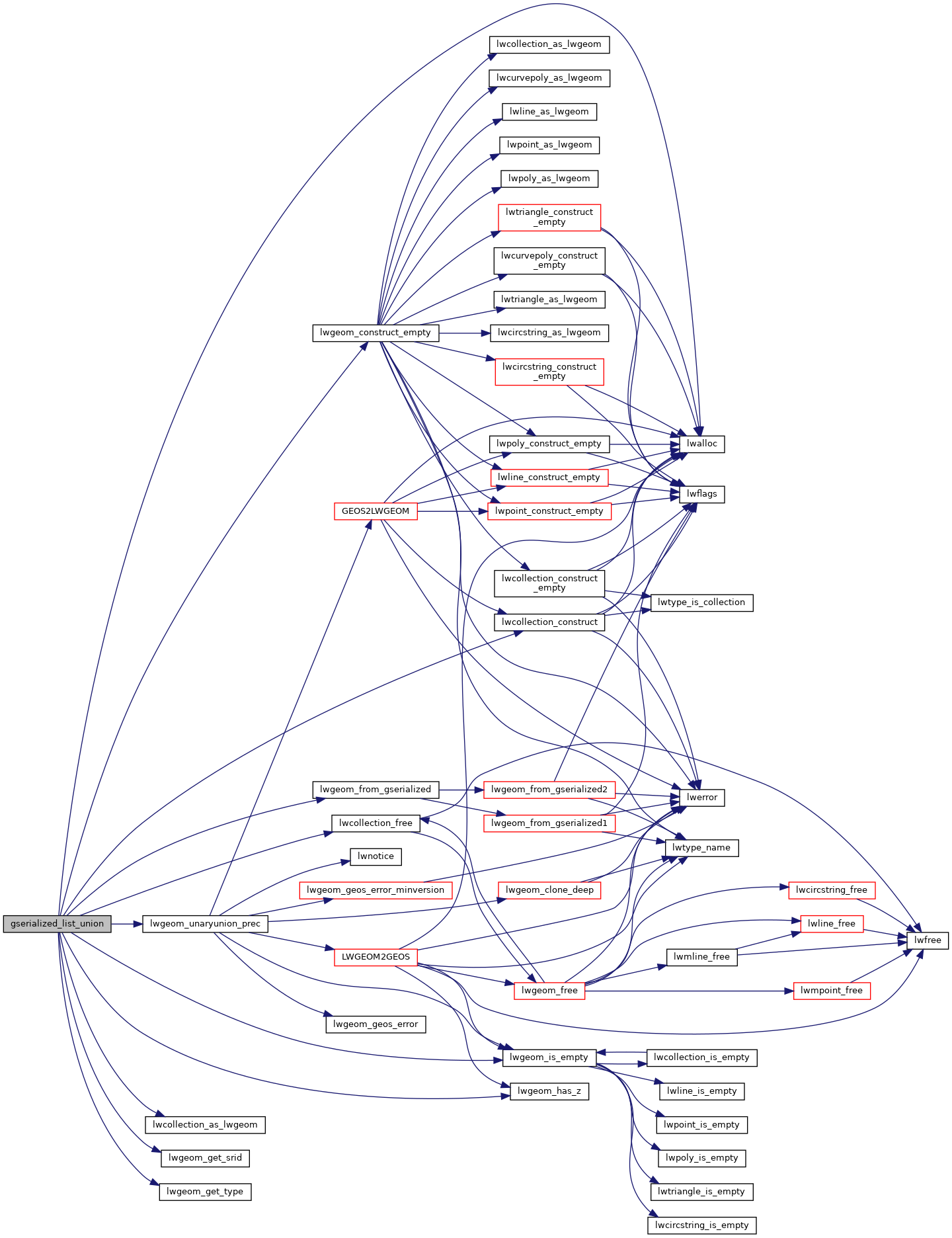◆ gserialized_list_union()
|
static |
Definition at line 268 of file lwgeom_union.c.
LWGEOM * lwgeom_from_gserialized(const GSERIALIZED *g)
Allocate a new LWGEOM from a GSERIALIZED.
Definition: gserialized.c:239
LWGEOM * lwcollection_as_lwgeom(const LWCOLLECTION *obj)
Definition: lwgeom.c:309
int lwgeom_has_z(const LWGEOM *geom)
Return LW_TRUE if geometry has Z ordinates.
Definition: lwgeom.c:934
LWGEOM * lwgeom_unaryunion_prec(const LWGEOM *geom1, double gridSize)
Definition: liblwgeom/lwgeom_geos.c:841
LWCOLLECTION * lwcollection_construct(uint8_t type, int32_t srid, GBOX *bbox, uint32_t ngeoms, LWGEOM **geoms)
Definition: lwcollection.c:42
LWGEOM * lwgeom_construct_empty(uint8_t type, int32_t srid, char hasz, char hasm)
Definition: lwgeom.c:2105
static int lwgeom_is_empty(const LWGEOM *geom)
Return true or false depending on whether a geometry is an "empty" geometry (no vertices members)
Definition: lwinline.h:203
Definition: liblwgeom.h:443
Definition: liblwgeom.h:573
Definition: liblwgeom.h:457
References COLLECTIONTYPE, LW_FALSE, lwalloc(), lwcollection_as_lwgeom(), lwcollection_construct(), lwcollection_free(), lwgeom_construct_empty(), lwgeom_from_gserialized(), lwgeom_get_srid(), lwgeom_get_type(), lwgeom_has_z(), lwgeom_is_empty(), lwgeom_unaryunion_prec(), result, SRID_UNKNOWN, and ovdump::type.
Referenced by pgis_geometry_union_parallel_finalfn().
Here is the call graph for this function:

Here is the caller graph for this function:
